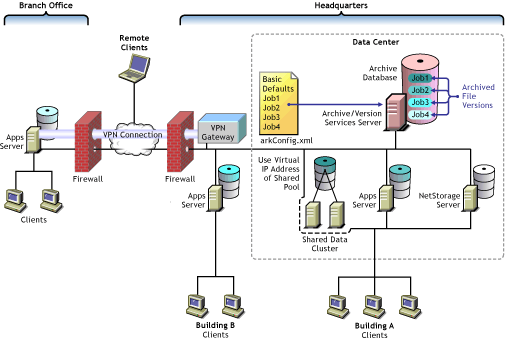3.2 Designing the Archive and Version Services Topology
Novell Archive and Version Services supports several storage topologies, as shown in the following figure. In a typical enterprise, the archive server resides in the data center to provide convenient access to services for all users. The source volumes with files to be versioned can reside on local or remote servers in single or clustered configurations.
The number of archive servers you need depends on the number and size of file versions being archived and the distribution of users who need to access the versions. For example, if you have numerous volumes with many files changing at a high frequency, you might implement multiple archive servers. You should also consider the feasibility of backup for a server based on the anticipated size of the archive database and data.
For a geographically distributed enterprise, an archive server might reside in each regional data center. Key factors to consider are the speed, capacity, security, and cost of communications links between regions. Because the archive server transfers files non-encrypted across network connections, communications environments and connections must be secure.
Figure 3-1 Example of Storage Topologies Supported by Novell Archive and Version Services
